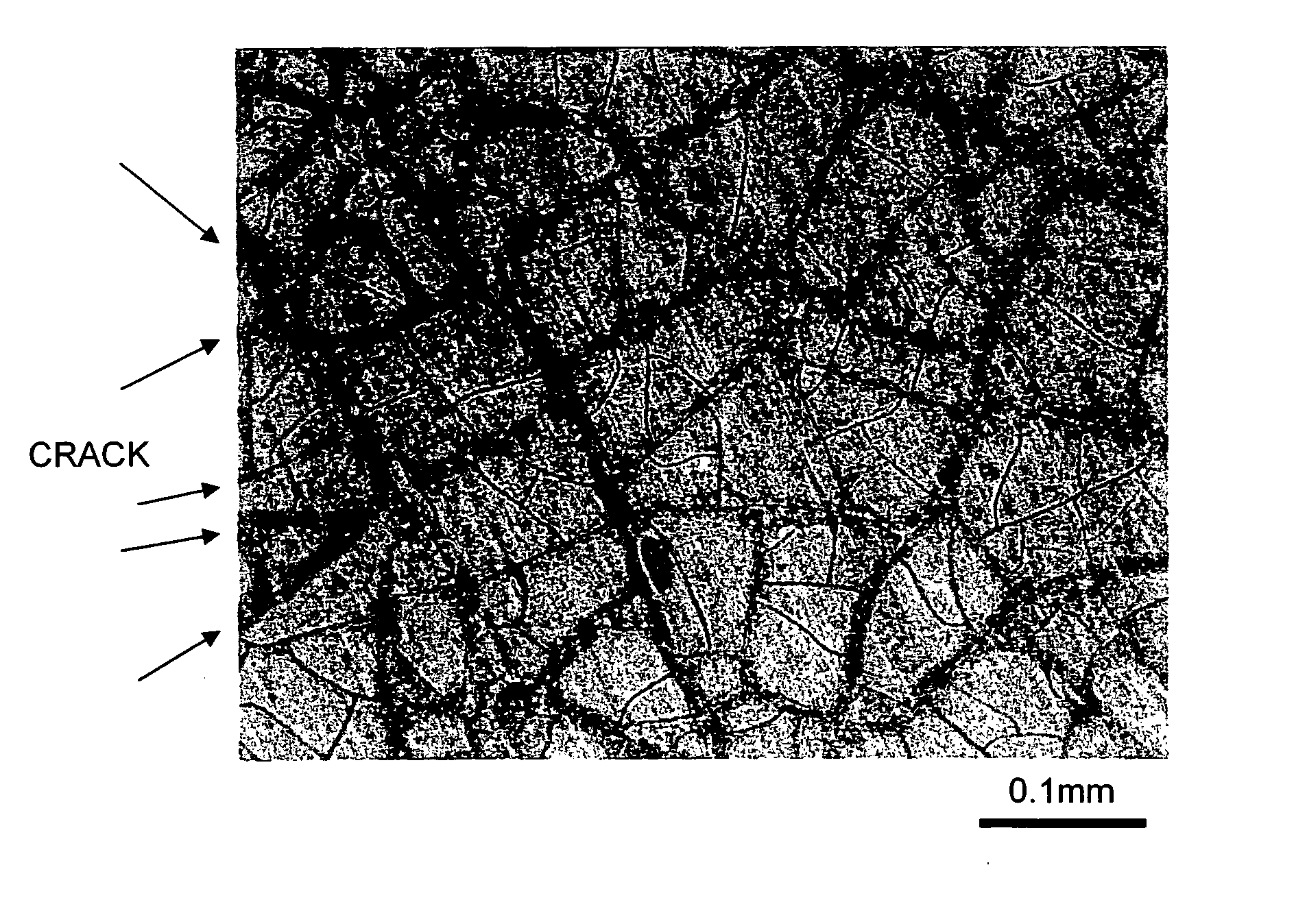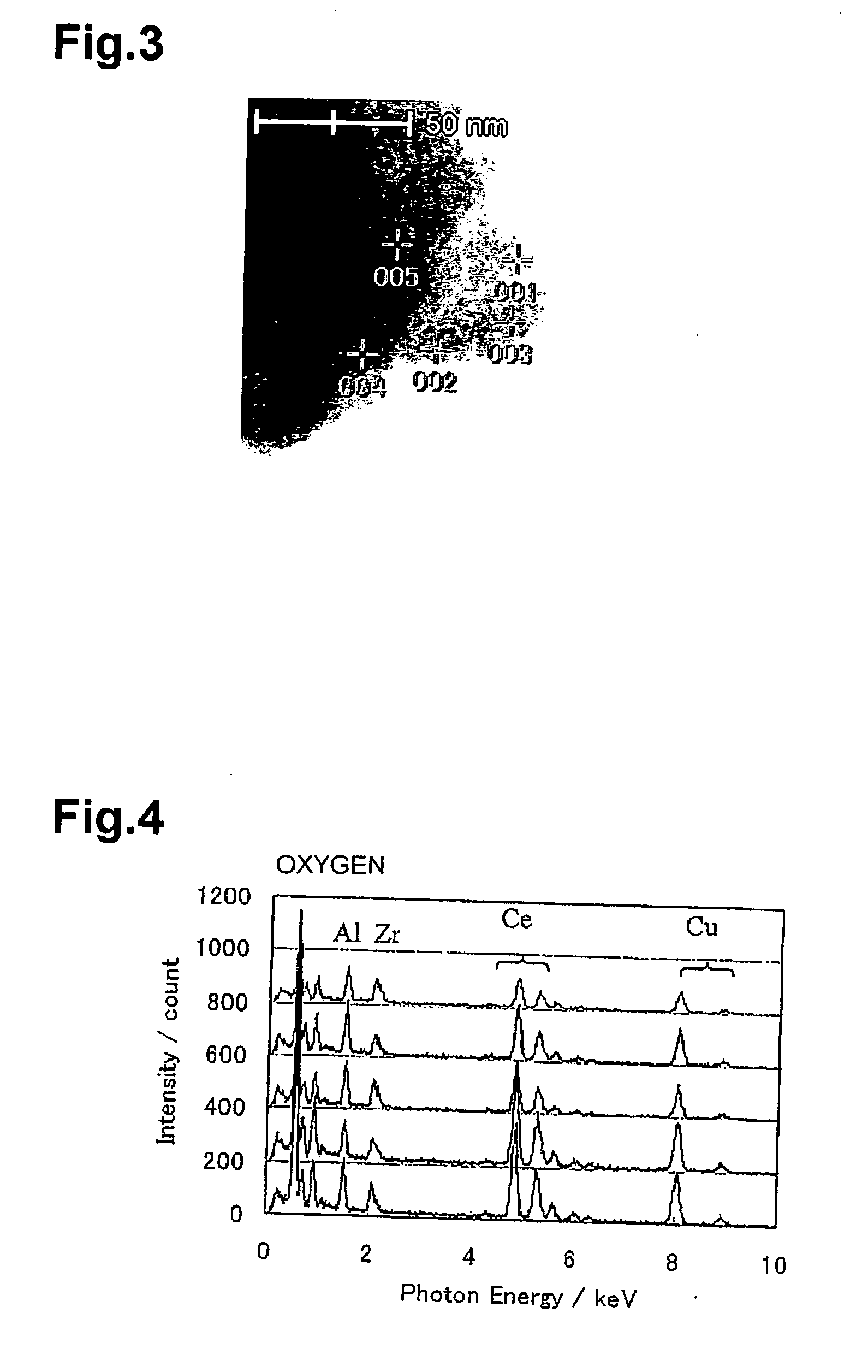Metal Oxide Nanoporous Material, Coating Composition to Obtain the Same, and Methods of Manufacturing Them
a technology of metal oxide nanoporous material and coating composition, which is applied in the direction of metal/metal-oxide/metal-hydroxide catalyst, catalyst activation/preparation, aluminium oxide/hydroxide, etc., can solve the problems of not homogeneous, not sufficiently adhesive, and not sufficiently resistant to heat, so as to achieve excellent heat resistance, excellent adhesion, excellent heat resistance
- Summary
- Abstract
- Description
- Claims
- Application Information
AI Technical Summary
Benefits of technology
Problems solved by technology
Method used
Image
Examples
examples
[0197] The present invention will be explained below more specifically using examples and comparative examples, but the present invention is not limited to the following examples.
[0198] Note that T. K. ROBOMICS® (Tokushu Kika Kogyo Co., Ltd.), with its mixing section being T.K. HOMO MIXER MARK II Model 2.5, was used as the homogenizer.
[0199] In addition, the following were used as alumina (Al2O3) colloid, titania (TiO2) colloid, Al solution, Zr solution, Ce solution, and Rh solution:
[0200] Al2O3 colloid: mean particle size 5 nm to 20 nm, acicular particle, nitrate water solution (solid-content concentration: 25% by mass);
[0201] TiO2 colloid: mean particle size 10 nm to 11 nm, pH 3 water solution (solid-content concentration: 15.2% by mass);
[0202] Al solution: aluminum nitrate water solution (solid-content concentration: 5.44% by mass);
[0203] Zr solution: zirconium oxynitrate water solution (solid-content concentration: 18% by mass);
example 1
[0209] A colloidal solution with a solid-content concentration of 12% by mass was prepared by diluting, with methanol, the mixture of Al2O3 colloid, Zr solution and Ce solution. These were mixed so that a mass ratio of Al2O3:ZrO2:CeO2=35:30:35 would be attained in the metal oxide thin film to be obtained. Subsequently, the obtained colloidal solution was mixed with the homogenizer at a shear rate of 20000 sec−1 for 2 minutes, followed by removing entrained bubbles at a gently stirring rate (20 rpm) for approximately a minute to obtain a coating composition.
[0210] Subsequently, each of the above-mentioned base materials was immediately dipped in the coating composition obtained as mentioned above for 1 second to 10 seconds. The base materials were taken out, and then the excess coating composition was removed from the surface of each of the base materials with gravity and by shaking. The base materials were placed horizontally, and then dried gently at room temperature for 5 minutes...
example 2
[0214] Moisture was removed by heating the Al2O3 colloid up to 150° C., and the nitrate composition was removed by further heating the Al2O3 colloid up to 500° C. The resultant product was ground using a mortar. Thus obtained was Al2O3 in powder of mean particle size of approximately 150 μm. Subsequently, the obtained Al2O3 powder was soaked in the Rh solution for an hour, and was subjected to a suction filtration by a filtration filter, and then the residue of filtration was collected. The Al2O3 powder as the residue was calcined in the air atmosphere at 300° C. for approximately 60 minutes, and then was ground using a mortar to cause the mean particle size to be approximately 70 μm. Thereafter, Al2O3 powder (the amount of supported noble metal: 3% by mass) was obtained with its mean particle size being adjusted, using an attriter (by wet-milling), to 1 μm or smaller.
[0215] A colloidal solution with a solid-content concentration of 12% by mass was prepared by diluting, with methan...
PUM
| Property | Measurement | Unit |
|---|---|---|
| Length | aaaaa | aaaaa |
| Length | aaaaa | aaaaa |
| Fraction | aaaaa | aaaaa |
Abstract
Description
Claims
Application Information
 Login to View More
Login to View More - R&D
- Intellectual Property
- Life Sciences
- Materials
- Tech Scout
- Unparalleled Data Quality
- Higher Quality Content
- 60% Fewer Hallucinations
Browse by: Latest US Patents, China's latest patents, Technical Efficacy Thesaurus, Application Domain, Technology Topic, Popular Technical Reports.
© 2025 PatSnap. All rights reserved.Legal|Privacy policy|Modern Slavery Act Transparency Statement|Sitemap|About US| Contact US: help@patsnap.com



